Fiber optic Ethernet cables stand out as one of the most advanced forms of networking over copper ethernet due to the immense power fiber optics offer in data transmission. Unlike copper cables that face problems with slower internet speeds and a reduction in signal quality over longer distances, fiber optics use light. So what makes these cables operate with such precision and dependability? Whether you are a business professional looking for powerful networking strategies or a tech-savvy individual wanting to broaden your horizons, this guide aims to clear the misconceptions surrounding the key concepts, advantages, and uses of fiber optic Ethernet cables. By the end of the article, you will understand the role of fiber optic Ethernet cables in the modern world dominated by data.
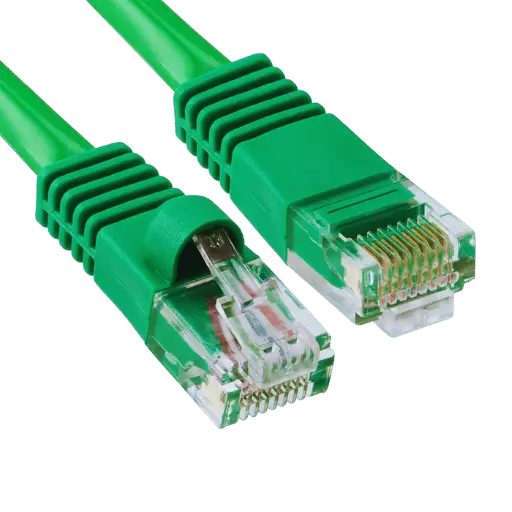
A fiber optic Ethernet cable is one of the types of network cables that transfer data over glass or plastic fibers using light signals. Fiber optic cables are more advanced than traditional copper cables since they have greater bandwidth and faster data transfer speeds over long distances. These cables are built to reduce signal loss and interference which is essential in high-performance networking in homes, businesses, and data centers. Moreover, these cables are more durable when compared to others and are less vulnerable to environmental factors like electromagnetic interference ensuring that they can used in a variety of applications.
Fiber optic cables work by sending data as light pulses through glass or plastic fibers. A fiber optic cable consists of three parts: the core, cladding, and protective outer layer. The core is the part of the cable that contains light signals and is made of glass with high purity. The cladding is also a layer of lower refractive index material. The core is surrounded by a cladding that bounces back light into the core, this ensures that the light travels long distances without escaping. The outer part of the cable protects against environmental and physical damage.
Total internal reflection is one of the key principles of fibers. Knowing its prisms, light reflects and transfers through the core if the core has a certain angle. This phenomenon also enables the cable to bend light. The reason the speed of light enables high-speed transmitted signal is much greater than in electrical signals sent in copper wires. Newer models of fiber optic cables can enable data rates over 1 terabit per second which makes the cables important for services such as cloud computing, streaming, and telecommunications that require fast data relaying.
Furthermore, fiber optics are not impacted by electromagnetic interference as much, and their attenuation rate is low, losing approximately 0.2 dB per kilometer for single-mode fibers. This efficiency enables longer transmission distances without requiring signal repeaters. Moreover, advanced techniques like dense wavelength-division multiplexing (DWDM) allow for even greater capacity by transmitting multiple data streams through a single fiber optic line. The evolution of fiber optic technology suggests that communication systems will be faster and more dependable in the years to come.
Mankind’s innovation of Fiber Optics has revolutionized the world and has aided in opening greater opportunities within the telecommunications and data transmission field, as its methods vastly exceed traditional communication methods in terms of :
Bandwidth Capacity
Compared to copper wires, fiber optic cables offer superior transmission of data. Single-mode fibers, for example, can support data linear network transfers in excess of 100 Gbps. This assures effortless transmission within enterprise networks, streaming services, and other data-demanding applications.
Speed and Latency
Data transfer via fiber optic cables occurs at the speed of light. The use of copper wiring tends to slow down electrical processes due to resistance, while fiber optics eliminate latency. This is particularly useful for video conferencing and gaming, where real-time response interactions are critical.
Distance Transmission
Usage of fiber optics vastly surpasses conventional copper wires, as it allows data to be transmitted over distances that exceed 60 miles (approximately 100 kilometers and depending on other factors such as the type of optical fiber and signal amplifier used, data quality can be incessantly maintained over greater distances without the issue of signal deterioration).
Enhanced Security
Because of how they are constructed, fiber optic cables are more secure than copper cables. They are more resilient to signal tapping or disturbance because any effort to breach the cable would cause leakage of light, which would be detectable, and reduce performance. This makes them a trustworthy option for sensitive data transmission.
Immunity to Electromagnetic Interference (EMI)
Fiber optic cables do not suffer from electromagnetic interference (EMI) like copper cables do with other devices or environmental factors because they operate using light pulses. Because of this, communication is stable and consistent even in high electromagnetic activity regions.
Sustainability and Durability
Fiber optic cables are thinner, lighter, and more durable than copper cables. Their resistance to weather, moisture, and chemicals reduces the need for frequent replacements. In addition, they emit less energy during data transmission, which increases the overall energy efficiency, compared to traditional copper systems.
Scalability for Future Technologies
The demand for high-speed data transmission is increasing with the adoption of 5G networks, cloud computing, and the Internet of Things (IoT). Fiber optic networks are scalable and allow for bigger capacity upgrades without major infrastructure modifications, making it easier to adapt to future technological advances.
The merits highlighted here make fiber optic technology very important in contemporary communication systems because it allows for quicker, more dependable, and secure transmission of data across various applications.
Modern data transmission needs are best satisfied with Internet connectivity through fiber optic technology, which remains unrivaled for its advantages. For speed, it is unparalleled; data is relayed through fiber optic cables almost at the speed of light. Average download and upload speeds at times outpace 1 Gbps (Gigabit per second), which is far better than copper ethernet. As an example, FTTH (Fiber to the Home) networks in advanced deployments tend to support speeds of up to 10 Gbps, which outperforms traditional copper-based networks.
Fiber optic systems benefit from remarkable reliability. Unlike other cables, fiber optics have no electromagnetic interference making the Internet connection more stable even during bad weather or in electrically hostile environments. This feature is especially beneficial for remote work, cloud-based services, telemedicine, and other critical applications that require uninterrupted connectivity.
Applications such as video conferencing and online gaming, as well as the integration of IoT (Internet of Things) devices, require the use of fiber optics due to known low latency. Low latency guarantees quick response times, therefore improving user experiences and minimizing lags in real-time data transfers.
Furthermore, fiber optics guarantee enhanced security. Their structure makes fiber cables hard to tap without detection, providing additional protection from data breaches and cyberattacks. This is extremely helpful for companies and organizations that deal with sensitive data.
Finally, fiber optic networks are forward-thinking because of the incredible data transmission capabilities of fiber optic cables. They are scalable and compatible with future technologies, including 5G, AI, and edge computing. Moreover, they can satisfy growing bandwidth requirements and diminish the need for regular infrastructure changes. This shows fiber optics can adapt to growing digital needs without compromising performance.

Each type of fiber optic cable has its unique structure and application. They are grouped as either single-mode fiber (SMF) or multimode fiber (MMF). Each classificação has specific characteristics that determine its suitability for specific applications.
Single Mode Fiber (SMF)
Cables with Single-mode fiber optics have a core diameter of approximately 9 microns, which is quite small. As a result, only one light mode can propagate, which subsequently diminishes signal weakening and dispersion over long ranges. For example, SMF works best for long-haul communications such as telecommunications and internet backbone infrastructure, because data needs to be transmitted over long distances, i.e., hundreds to thousands of kilometers. Ultra-high capacity networks are best partnered with modern single-mode fibers, as they are capable of supporting data rates over 400 Gbps.
Multimode Fiber (MMF)
The core diameter of multimode fiber cables is 50 microns or even 62.5 microns enabling it to support the transmission of multiple modes of light within the fiber optic. Because of this property, MMF is good for shorter-distance data transmission such as in Local Area Networks (LANs) or in data centers. However, due to modal dispersion, the signal degrades over longer distances, limiting its effective range to around 300-400 meters for high-speed applications like 40 Gbps and 100 Gbps. Due to its compatibility with cheaper light sources, such as LEDs or VCSELs (Vertical-Cavity Surface-Emitting Lasers), MMF is more affordable for short-range setups.
Armored Fiber Optic Cable
Armored fiber cables are made to be durable or long-lasting and for protective reasons in rough or harsh conditions. They come with an additional layer of metal or polymer casing meant to shield the delicate glass fibers from physical violence, water, and even rodents. These types of cables are frequently used in industrial applications or outdoor settings where environmental conditions pose a threat to standard cables.
Plastic Optical Fiber (POF)
As the name suggests, plastic optical fiber is made of fiber polymer materials as opposed to glass. Its lightweight, flexible, and easily installable features make it ideal for home networking, and automotive and industrial applications. Although POF has lesser bandwidth and range capabilities than glass fibers, it remains a suitable option for consumer services.
By the intended application, selection of a fiber optic cable is defined by factors such as distance, bandwidth thresholds, environmental conditions, and cost analysis. Every type of fiber optic cable is crucial for modern networks due to the requirement for fast, dependable connectivity.
The distinctions between multimode fiber and single-mode fiber lie in their core diameter, light propagation, and application. Given that multimode fiber has a larger core which ranges between 50 to 62.5 microns, multiple light modes can simultaneously propagate through. This characteristic allows it to transmit data over shorter distances (up to 550 meters at 10 Gbps), which is why it is frequently employed in local area networks (LANs) and data centers.
On the other hand, single-mode fiber has a much smaller core diameter, usually around 8 to 10 microns. This design guarantees light travels in a single mode, thus reducing modal dispersion and improving signal quality. As a result, single-mode fiber is ideal for long-distance data transmission, supporting 40 kilometers or more without requiring signal amplification. Additionally, its higher bandwidth capacity makes it suitable for telecommunications, cable television (CATV), and large-scale metropolitan networks.
In terms of cost, multimode fibers and their transceivers are less expensive than single-mode solutions. Yet, single-mode fibers provide better performance when bandwidth limits increase demands in the future. The preference between the two relies heavily on specific network design requirements such as distance, speed, and budget.
The optimal type of cable for you will depend on your application and requirements.
These cables should be selected considering the budget, distance, and future growth capabilities.
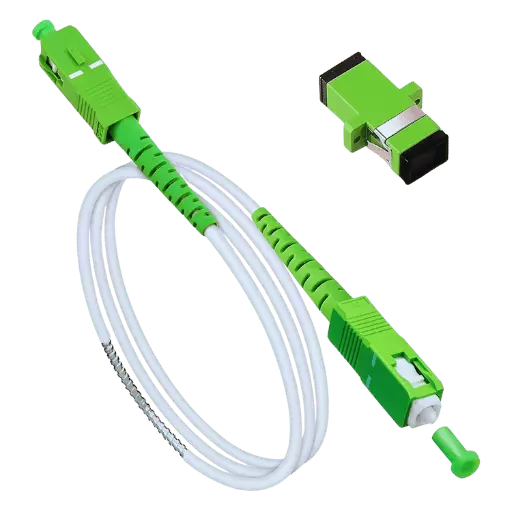
First and foremost, the difference between fiber optics and Ethernet systems lies in their speed, distance, and reliability. For example, fiber optic technology provides a greater speed than Ethernet and can transmit data without signal degradation over longer distances. This makes it useful for high-bandwidth applications and large-scale networks. On the other hand, Ethernet is better for short-distance communication within homes or small offices because it is easier to install and cheaper. Moreover, fiber optics admit less electromagnetic interference which makes them more reliable for areas with possible signal disruption. In most cases, the choice lies in the specific application requirements considering speed, distance, and budget.
An Ethernet cable’s purpose is to connect a range of up to several kilometers while enabling devices to connect through a Local Area Network (LAN). Moreover, it allows data to be transmitted at very high speeds with negligible delays. In today’s era where the Internet has permanently altered how people communicate or do business, an ever-increasing number of people depend on having stable and consistent connections. An Ethernet provides, uninterrupted channels that connect stably, always required in video conferencing sessions, sharing of documents, and gaming on the web.
The methodology of transmission, speed, and reliability are some of the aspects where fiber optic cables and copper cables differ. Unlike fiber optic cables which transmit data using light signals which increases the distance and speed without considerable loss of the signal, they also withstand electromagnetic interference better, allowing them to be relied on in various environments which is the reason why they are preferred over traditional options. On the other hand, copper cables use electrical signals that are slower than fiber optics, meaning that with greater distance, the signal is degraded. Copper cables are also susceptible to signals interfering and—interrupting the performance. Copper cables are more suited for short-distance connections as they are cost-effective while fiber optics are preferred for modern high-speed networks.
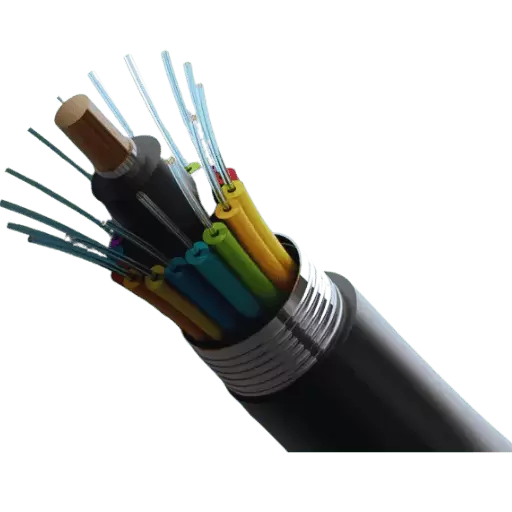
To maximize the transmission speed on fiber optic cables, careful attention must be given to installation and maintenance. First, use appropriate grade fiber optic cables that suit the bandwidth and distance needed. Second, reduce sharp bends, high tension, or contamination on connectors to avoid signal loss. Third, ensure that optical transceivers and amplifiers are reliable, well-calibrated, and equipped so signal deterioration is avoided. Additionally, routinely inspecting and removing dirt or debris from connectors prevents altered performance. These practices provide the greatest assurance of redundancy and efficacy in fiber optic networks.
The adoption of fiber optics communication systems has improved with the development of fiber optic technology primarily due to its marked advantages in long-distance communication. First, fiber optics has higher bandwidth in comparison to traditional copper cables, permitting the transmission of massive amounts of data as high as 100 Gbps and beyond, relative to the configuration of the network. Second, optical fiber displays very low signal attenuation over long distances. For example, single-mode fibers have signal losses in the order of 0.2 dB/km, allowing data to travel many kilometers before needing regeneration. Signal loss of this nature allows drastic reductions in the amount of repeaters or amplifiers needed in the network which ultimately leads to cost savings.
Moreover, fiber optics are unaffected by electromagnetic interference, which guarantees consistent and dependable signals in areas with significant electromagnetic activity. The uninterrupted nature of these signals is particularly important in industrial areas and for undersea cables. Increased fiber optic security also reduces the risk of data breaches during transmission, as fiber optics are more difficult to wiretap than copper cables. Additionally, optical fiber’s low weight, high durability, and resistance to temperature changes and corrosion make it suitable for harsh conditions or difficult locations. All of these factors illustrate why fiber is the most effective medium for long-distance communication infrastructure.
Prevention of electromagnetic interference (EMI) is paramount in maintaining the functionality and dependability of electronic systems. Effective prevention techniques for EMI include shielding, earthing, and using higher-quality leads. Shielding contains blocking constituents within conductive materials placed around them which stop competing electromagnetic fields from penetrating. For example, properly constructed shielding can attenuate EMI by 60 –80 dB depending on the chosen material and frequency range.
Equally important are the underlying approaches that provide a means for uncontrolled electrical noise to freely dissipate into the ground. For lowering EMI levels through grounding, systems should utilize a direct and minimal resistance conductive path, avoiding loops that may heighten interference.
Also, signal transmission through wires may employ twisted pair or coaxial cables which offer lower EMI. For instance, twisted pair balances cancel electromagnetic fields because of the geometry. Modern leads with foil or braid shielding can lower interference by an additional 30-40%. Besides these, engineers use adequate routing techniques to segregate power and signal lines to reduce cross-talk to the barest minimum.
EMI filters like low-pass filters also provide a different level of effectiveness since they suppress high-frequency noise while retaining important signal parts. FCC and CISPR compliance regulations are essential during system design because they define the bounds of EMI functionality objectives to be achieved.
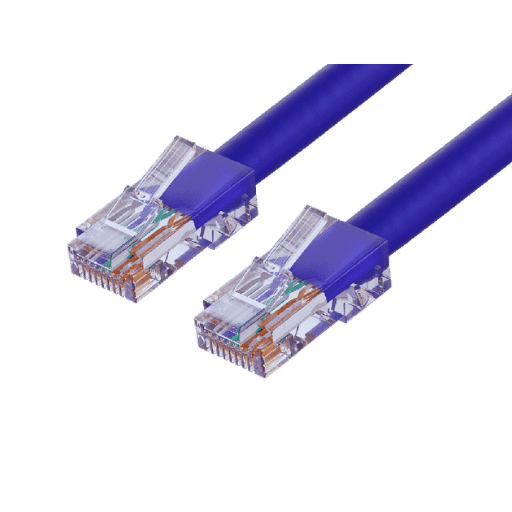
A very specific list of tools and equipment is needed to install fiber optic Ethernet cables to enhance functionality, performance, and efficiency. A detailed breakdown of the tools and their use is provided below:
Fiber Optic Cleaver
To cut fiber optic cables especially for smooth surfaces which are important for signal transmission to occur, a very high-precision cleaver is essential.
Optical Power Meter and Light Source
To verify the performance of installed cables, this tool helps in measuring the power levels as well as the losses that occur in the optical fiber.
Fiber Stripper
This tool is meant for fiber optic cables as it strips the outer jackets and coatings while ensuring that no damage occurs to the delicate optical fibers lying in the interior.
Crimping Tool
Crimping tools are important to aid in the fastening of cable connectors thus helping to secure a reliable and strong connection.
Fusion splicer
Two optical fibers can be fused and aligned together using a fusion splicer. Low loss junctions this results to is very critical for signal quality.
Connector Cleaning Kit
To prevent any obstruction on the connector ends, a proper cleaning kit composed of alcohol wipes, lint free swabs and cleaning cassettes helps ensure clarity in signal.
Visual Fault Locator (VFL)
A VFL is specifically designed to identify breaks, bends, or faults in a fiber optic cable by sending a visible red laser through it.
Cable Pulling Tools
Cable pullers and fishing tape are examples of tools that guide and pull fiber optic cables through conduits and other tight spaces without physically damaging them.
Precision Screwdrivers and Cutting Tools
These serve the purpose of mounting other hardware and also cutting the protective sheathing or armoring if required.
Safety Gear
The use of proper safety equipment such as gloves and safety spectacles will mitigate the risk of injury when working with delicate fibers and installation tools.
The combination of these tools enables technicians to perform installations to the required industry standards for functionality and safety. The effectiveness of the process is inherently linked to comprehensive training and the defined procedures. Furthermore, careful planning enables the use of the right tools which results in the implementation of high-performance networks which exhibit minimal signal degradation.
The successful connection of fiber optic cables demands extreme care to detail, high-level industry compliance, and specific tools to maintain signal clarity and performance. Take the following steps to connect fiber optic cables successfully:
Prepare the Fiber Ends: Strip the outer jacket of the optical cables using a fiber optic stripper and clean the fiber using alcohol wipes and ensure that you scrub away all contaminants that may obstruct proper connection, including dirt and grease.
Cleaving the Fiber: Using a high-precision fiber cleaver, perform a straight, 90-degree cut on the end of the fiber. The smoothness or lack thereof of the cleaves will determine how much optical loss will occur at the connection.
Connector Installation:
For Pre-Polished Connectors: Place the cleaved fiber into the connector’s pre-polished ferrule. Guarantee that you follow all manufacturer instructions and guidelines so that the connection is cast in place and does not shift.
For Fusion Splicing: Load the individual fibers into the splicing device. An electric arc will be used to precisely fuse the joints in a process known as fusion splicing. The average loss encountered in a test splice is deemed to be lower than 0.1 dB which fulfills the required standards.
Strength Testing:
Post-installation, test the termination with a light pull to check that the fiber is properly secured within the connector’s housing, particularly when a single cable connection is employed.
Conduct visual break detection using a VFL to check for any breaks or misalignment.
Inspection and Cleaning:
Check for scratches on the end face of the connector and ensure it is not dirty or has any form of contaminant utilizing a fiber optic inspection microscope.
In preparing connection face ports, clean their end-faces with non-abrasive wipes or applicators specifically designed for such tasks where necessary.
Final Testing:
Verify loss, fault, and connection certification compliance with design criteria using an optical time domain reflectometer (OTDR) and ascertain that all requirements are satisfied.
For standard use, the allowable optimum loss in optical attenuation tests for fiber connections is 0.3dB; ensure the outcomes for testing are within these limits for optimal network efficiency.
Adhering to these procedures ensures high reliability and quality in the alphanumeric indicators signal, optical power yield, and network signal transmission fidelity. Results from initial tests employing appropriate tools, adequate networked devices, and composite or standalone systems yield results expected by networked cycle result users.
While installing fiber optic cables, taking certain precautions is critical for preventing infrastructure damage and ensuring optimal performance. One primary concern is not exceeding the maximum specified bend radius allowed for the cable. If too much bending occurs, microbeads and macro bends can happen, resulting in losses. It is standard that the minimum radius of the bend is 20 times the cable’s diameter for static installations and 15 times the diameter for dynamic applications. Following these guidelines is important to ensure the integrity of signals.
Another consideration is all connectors and splices need to be clean from any dust, oil, moisture, or other contaminants. These contaminations could hinder the effectiveness of signals being sent and can lead to failure in connections. Recommended cleaning processes for such purposes involved the usage of isopropyl alcohol alongside lint-free wipes. Splicing might be deemed acceptable if the loss threshold and testing equipment guarantee it, 0.1dB is standard for fusion splices while less than 0.3dB is standard for connectors. Optical Loss Test Sets (OLTS) and Optical Time-Domain Reflectometers (OTDR) are examples of such testing equipment.
Third, avoid using excessive pulling force during cable-pulling activities. Depending on the type of cable and its manufacturer, most fiber optic cables have lower limits of tensile load ranging from 150 to 270 pounds. Placing excessive loads could introduce stress on the fibers which can lead to fractures, and have long-term reliability consequences. Proper cable-pulling techniques and equipment such as cable sheaves or lubricants can reduce these risks.
Moreover, the cables should be installed within a maintained controlled environment. Fiber optic cables are usually rated for temperature operating ranges of -40° to 158°F (-40° to 70°C). Installations outside these temperatures will cause jacket expansion or contraction, which could impair the performance of the cable.
Lastly, every cable installed should have clear identifications, and proper documentation must be kept during the whole installation process of the cable. Well-structured documentation eliminates unproductive troubleshooting time while providing multi-angled perspectives on the management of the network infrastructure. Adhering to these guidelines ensures technicians that fiber optics systems are built to work efficiently and not have any reliability or performance issues on industry standards.
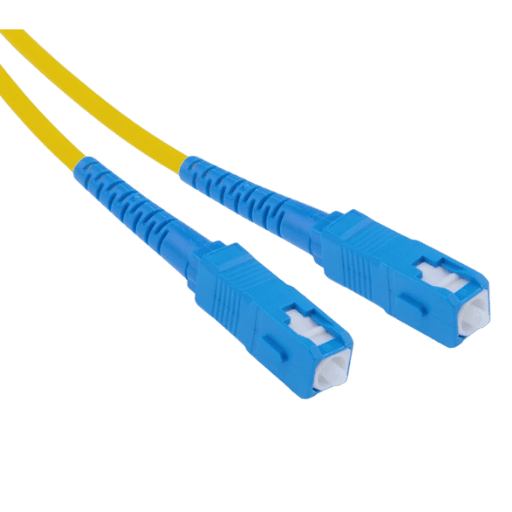
A: The distinction is in the method of data transmission, with fiber optic cables being more secure than copper ethernet. It is because fiber optic cables use light signals through optical fiber to transmit data over long distances at the speed of light, while ethernet cables (such as Cat 6 and Cat 8 ethernet) utilize copper wires to transmit electrical signals. Additionally, fiber optic cables have greater bandwidth and speed capabilities, faster distance capabilities beyond the 100-meter limit of copper, better security, and are immune to electromagnetic interference. However, ethernet cables are easier to install and more affordable because they lack the specialized equipment needed for fiber optic cables.
A: Fiber optic internet is significantly more advanced than traditional ethernet connections. Cat 8 ethernet, for example, can only theoretically reach speeds of 40Gbps over very short distances. Fiber optic connections, on the other, achieve a staggering 100Gbps to several terabits per second. The speed fiber optic internet delivers will differ based on your provider, but it consistently performs the best in terms of download speed potential. Further, fiber cables can maintain speed performance over much longer distances compared with ethernet cables, which suffer signal degradation beyond 100m.
A: Some readily-available products include patch cables, media converters that change Ethernet signals to fiber optic and vice versa, and numerous single and multi-mode fiber cables. You can also find connectors such as LC, SC, ST, and MPO/MTP, transceivers, distribution panels, and splice enclosures. In the field of networking, fiber optic internet modems and switches, as well as customized fiber optic systems for specific tasks are available. Each of these products come with varying levels of flexibility when it comes to speed, distance, environmental conditions, and overall demands. This includes everything from basic connectivity systems to enterprise-grade fiber optic systems.
A: RJ45 connectors are used with ethernet cables (also Cat 6 and Cat 8 ethernet) and have eight copper pins that connect to wires within the cable. The connectors are rugged, straightforward to install, and built for rapid disengagement. Conversely, Fiber optic connectors are more varied (of which there are LC, SC, and ST types) as they must be more accurately positioned concerning the optical fiber cores to reduce loss of light, unlike RJ45 connectors. Termination is easy on an RJ45 connector since no special tools are required, but fiber connectors demand tools and training. In addition, fiber connectors tend to be more resistant to harsh conditions and have superior bandwidth capabilities compared to optical fiber.
A: Cat8 ethernet has some advantages over fiber in certain situations. In the first place, it is cheaper than fiber while still maintaining impressive speeds of 40Gbps, and is compatible with legacy systems using RJ45 ports. Additionally, Cat 8 Ethernet cables do not require special training or tools for installation which makes them ideal for do-it-yourself installations. While not as effective as fiber cables, Cat8 cables do offer sufficient shielding against electromagnetic interference, and the ability to provide power through PoE (Power over Ethernet) which is not the case with fiber. On the downside, Cat8 ethernet cables have a maximum length of 100 meters and do not offer the speed, distance, or future-proofing of fiber optic solutions.
A: Connecting fiber optic internet to your home network requires an Optical Network Terminal (ONT) that converts fiber optic signals into ethernet port signals. This device, which is referred to as an ONT, Interfaces with your provider’s fiber line and outputs directly into your router using an ethernet patch cable. Make sure to use, at a minimum, Cat 6 or 8 ethernet cables for the best performance between the ONT and router. If you wish to expand fiber links within your home, you will require media converters that change fiber interfaces to ethernet and vice versa, particularly if you are considering fiber ethernet options. Most consumer devices are connected via ethernet cables instead of directly using fiber, which makes this methodology standard practice for fiber optic internet setups.
A: Single-mode and multimode optical fiber differ in their core diameter and the way they transmit light. Single-mode fibers use a core less than 10 microns in diameter which allows for one single path of light, facilitating the data being sent over a long distance, up to 100 km without losing strength (minimal signal degradation). It typically uses laser light sources and is more expensive. Multimode cables have a core larger in diameter (50 to 62.5 microns) which allows several paths for light, thus suitable for shorter distances (up to 2 km) but higher bandwidth over that short span. Multimode uses LED light sources making it generally less expensive and thus common for building or campus networks.
A: The processes for installing fiber optic and ethernet cables differ greatly. The construction of ethernet cables allows for greater user-friendliness. Since they are composed of copper wires, their ends can easily be terminated with simple tools in the field. Additionally, ethernet cables are somewhat forgiving in terms of bending and can be connected using standard RJ45 plugs. Fiber optic cables, however, require more care. Their ends need to be spliced or terminated with specialized tools that are designed for fragile glass or plastic fibers. Fiber optic cables must also be handled with care to avoid breaking the core fiber while maintaining a specific alignment with the connector. Professional installation is usually suggested for fiber optic solutions, while ethernet installations tend to be simpler and more suited for a do-it-yourself approach.
A: With ethernet cables, you have to take into account the distance limitation of 100 meters. Fiber has no such distance limitation, only speed and environment—meaning, it can extend a lot further without any loss in signal strength. Fiber optic also provides a higher bandwidth than ethernet, decreasing the time needed to transmit data across the network. There are other factors too, such as the level of electromagnetic interference the cable might be subjected to, whether or not the client has an eyeglass socket, the budget for the project, installation, network expansion plans, and even security needs. Generally speaking, fiber optic cables are more secure. Most home users will likely find Cat 6 or Cat 8 ethernet cabling more than adequate. Businesses that need higher bandwidth or distance requirements would benefit more from fiber optics. Keep both your current and future requirements in mind, when making this decision.
A: Indeed, it is possible to implement both ethernet and fiber optic cables in the same network by utilizing media converters or switches with ports for both types. This strategy is often used in many networks to maximize the benefits of each type of cable. For instance, you may use fiber optic cables for longer backbone runs between buildings or floors while ethernet patch cables serve as the final connections to devices. This combination permits the utilization of benefits from fiber’s speed and distance capabilities while reserving more expensive ethernet connections where necessary. Many corporate networks are configured in this way to balance performance, distance, and cost factors.
1. Design Approach for an FPGA-Based Ethernet Bridge for Optical Fiber Communication System
2. FPGA Realization of the Core for 1000base-x Ethernet Physical Layer
3. Application Notes: 10 Gb/s Ethernet on Multimode Fiber
5. Ethernet
6. Internet